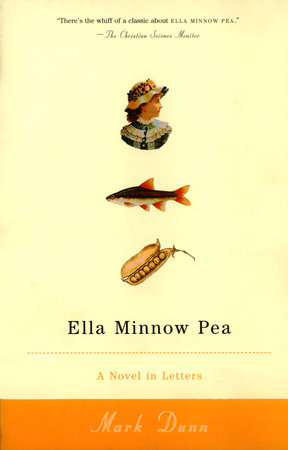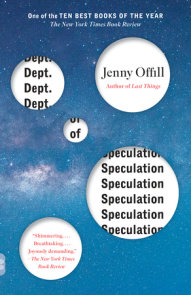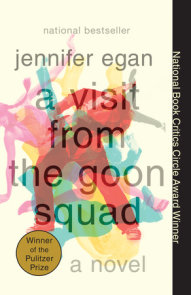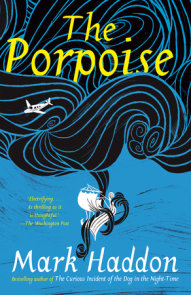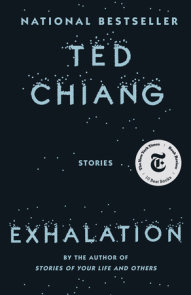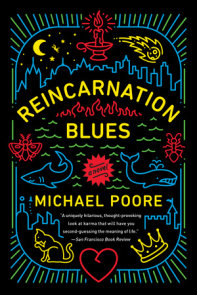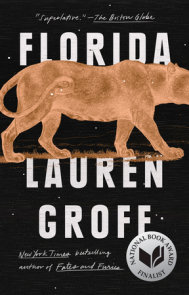TEACHING GUIDE
NOTE TO TEACHERS
Hailed by the Christian Science Monitor as “the first political satire of the 21st century”—and by the Dallas Morning News as “Orwell meets Scrabble”—Ella Minnow Pea is an exuberant novel of language and ideas that should be of particular interest to high school and college students. As a political satire, it reflects the paranoid absurdities of both the political correctness movement and the domestic war on terror. But the book is also a dazzling linguistic performance that will appeal to anyone who enjoys the subtleties and suppleness of the English language. The 19th-century violinist Niccolo Paganini was famous for snipping three strings of his instrument in mid-concerto and playing on without missing a beat. In Ella Minnow Pea Mark Dunn goes Paganini 21 better, divesting himself of most of the letters of the English alphabet and doing so in perfect accordance with the dictates of his story.
The island republic of Nollop is situated 21 miles southeast of Charleston, South Carolina, and named after its native son Nevin Nollop, the creator of the typist’s pangram “The quick brown fox jumps over the lazy dog.” Nollop is blessed with beautiful beaches, stunning sunsets and an exceptionally literate citizenry that has followed the founder’s injunction to “push the perimeter of this glorious language.” [74] One can see just how literate from even a cursory perusal of the letters of Ella Minnow Pea, the 18-year-old laundress who is the book’s heroine and principal narrator. Ella Minnow Pea is an epistolary novel, unfolding through the correspondence among Ella, her cousin Tassie Purcy, and various other characters, along with communiqués from Nollop’s governing High Island Council.
One July evening a tile falls from the monument that commemorates Nollop’s iconic sentence. In panic, the Council’s members sequester themselves to glean the purpose and design behind the “detachation.” Shortly they announce their decision: The fall of the tile clearly represents the great Nollop’s posthumous wishes, and since the tile in question bears the letter ‘Z’ it must follow that Nollop wants that letter extirpated from the island’s speech and writing. The Council obliges with a ban, threatening violators with flogging, the stocks, or permanent exile. And although at first Ella believes that the loss of ‘Z’ will be only a minor inconvenience, she soon realizes that the ban has grotesquely far-ranging implications. These become increasingly evident as more tiles tumble and more letters are taken out of circulation. Soon communication becomes all but impossible, island life has come to a standstill, and the best and brightest of Nollop’s citizens have been exiled. In the end only Ella is left to break the Council’s stranglehold—by composing a pangram even pithier than Nollop’s.
ABOUT THIS BOOK
“A curiously compelling . . . satire of human foibles, and a light-stepping commentary on censorship and totalitarianism.” —The Philadelphia Inquirer
"Wordsmiths of every stripe will appreciate this whimsical fable, in which Dunn brilliantly demonstrates his ability to delight and captivate." —Publishers weekly
"Dunn… stirs a lot of farce and comic relief into the story….If you’re up to the deciphering task, you’ll go on a merry romp in this book." —Library Journal (starred)
On OuLiPo: An Introductory Note
Ella Minnow Pea is a lipogrammatic novel; that is, it is written to avoid using certain letters of the alphabet—ultimately, all of them save ‘l, m, n, o, p.’ As such, it is a late example of the school of literature known as ‘OuLiPo,’ an acronym for ‘Ouvroir de Littératture Potentielle’ or ‘Workshop for Potential Literature.’ Although OuLiPo originated in France, where it was co-founded in 1960 by the writer and mathematician Raymond Queneau and François Le Lionnais, it has come to include works by Italian (Italo Calvino), Argentinean (Julio Cortázar), and U.S. (Harry Mathews, Walter Abish) writers. Oulipian novels are composed under certain constraints of language, plot or structure. According to Professor Paul Harris of Los Angeles’ Loyola Marymount University, such “constraints push writers into new linguistic territories—one might say that an Oulipian work is a sort of ongoing investigation into language itself.” Harris’s essay “The OuLiPo,” can be viewed at:
http://clawww.lmu.edu/faculty/pharris/oulipo.htm
Actually, OuLiPo only brings to fiction principles of organization that have been present in poetry since the appearance of the sonnet and the villanelle. And as many poets have noted, placing voluntary restrictions on how one writes may paradoxically liberate what one writes. In the words of Queneau, “the Oulipian writer is always inspired” [Harris, ibid.]
ABOUT THIS AUTHOR
Mark Dunn is the author of more than 25 full-length plays, including Belles, Five Tellers Dancing in the Rain and Armistice Day. He has been the recipient of several national awards, including the 1997 Nesburn Prize and the Beverly Hills Theatre Guild/July Harris Playwriting Award. He is currently playwright-in-residence with the New Jersey Repertory Company and the Community Theatre League in Williamsport, Pennsylvania. Originally from Memphis, he now lives in Greenwich Village with his wife, Mary. Ella Minnow Pea is his first novel. [Info on file, in printout from Mostlyfiction.com]
DISCUSSION AND WRITING
Understanding the Story
1. What event precipitates the novel’s action? [3] What is the letter on the fallen tile? [5]
2. Why does the Council hold an emergency meeting and how does it explain the ‘detachation’ of the tile? [6] Does Ella agree with this explanation? [7] Do you?
3. What is Nevin Nollop’s legacy to the people of Nollop? [5, 10]
4. What is the Council’s first edict? [5-7]
5. How does Ella think the edict will change life on the island? [7] How do Tassie’s predictions differ from hers? [9-10] Which of them turns out to be right?
6. What are the edict’s incidental consequences? How does it (and its successors) affect the island’s libraries, schools, press and even its extra-literary activities? [17-19, 21-2, 27, 30, 76] What does this suggest about the importance of language?
7. Why can’t dissenting Nollopians simply launch a recall motion against the Council? [10, 29]
8. Do the Council’s edicts contain any loopholes or exemptions? [13] What are they and how are they later put to use by Ella and her allies? [102-3, 127]
9. What does Tassie mean when she writes, “In the sanctuary of my thoughts, I am a fearless renegade”? [18]
10. How does the Council go about enforcing its rulings? [21, 29, 119] In particular, how does it find out which of its subjects are using forbidden letters?
11. What does Ella mean when she says that the law “builds rock walls between hearts” [22]? What evidence do you see for this?
12. What headline appears on the final edition of the Nollop Tribune? [30] How do other dissenting Nollopians use language to defy the Council? [48-9]
13. How do Mr. and Mrs. Towgate justify informing on Mittie Purcy? [32, 39-43] What implicit accusation does Mr. Towgate level against Tassie? [40]
14. Who is Nathan Warren and how has he learned of Nollop’s predicament? [44-5] What vital and disturbing piece of news does he bring with him from the States? [50] What does he propose to do with this information? [51-3]
15. What are the “ten salients” of the Council’s proclamation to the people of Nollop? [55] How does it justify its actions? What does the story about Nollop and his stenographer suggest about the founder’s character? [56]
16. What transpires at the first meeting of the island’s dissidents? [68-9]
17. Why does Ella maintain that the loss of the letter ‘D’ robs islanders “of great chunks of our very history?” [69]
18. Following D’s departure, what alternate names does the Council give the days of the week? [70] At what point do these names, too, become inoperative, and what takes their place? [[115, 127, 130]
19. What were Nollop’s last words, and what is their relevance to the story? [74, 78-9]
20. What seemingly minor piece of information do we learn about Ella’s father? How will this become important later in the novel? [82, 119-20]
21. Describe the challenge that Nate issues to Mr. Lyttle. [94-6] What is it intended to prove? Why does the rest of the council agree to it? [99-100] What is the significance of the term “Enterprise 32”? [107]
22. What further edict does the Council issue against exiles? [100] Is this decree meant simply as punishment or does it serve an ulterior purpose?
23. What brings about Mittie’s second violation of a Council edict? [116] What particular regret does she express when reporting the incident to her daughter? [117]
24. Why is Rory Cummels expelled from Nollop? [121-2] How does his offense differ from those of the other characters’ and what does it say about the metastasis of the Nollopian cult?
25. In a letter to Nate, Tassie writes, “We are our own cavalry. The only cavalry there is. Whose horses seem in permanent hobble status.”? [123] What does she mean by this?
26. Why is Tassie imprisoned and how is she freed? [127-8, 132, 147-8]
27. How does Georgeanne Towgate come to repent her earlier actions? [130, 139, 159]
28. What is so striking about Amos Pea’s parting letter to his family? [133-4, 195-7]
29. What happens to life on Nollop as the Council’s bans become increasingly restrictive? [149-51, 154] What does the Council do to restore order? [151]
30. Who is Tom and what is his role in Enterprise 32? [151-4]
31. What new concession does the Council make to facilitate written communication among Nollopians? [165]
32. How does Professor Mannheim die and who relates the “greephos” [169] news to Ella? What does this augur for the success of the Enterprise? [170-3]
33. Describe the demise of Georgeanne Towgate. [175-181] Do you think the manner of her death reflects her personality or it a response to the rigors of life in an alphabetically-deprived society?
34. Who is Ella’s last remaining ally in the Enterprise [181-2]? What keeps her from abandoning the project or following her loved ones into exile? [187]
35. How does Ella come to meet the challenge to the Council? [197] How does the author demonstrate the validity of her sentence? Why does she refuse to take full credit for it? [201]
36. What final revelation emerges about the once-revered Nollop? [204-205]
Language: Pangrams, Anagrams, and Portmanteau Words
1. Ella Minnow Pea features an expansive and often exotic vocabulary, plentifully augmented by neologisms and especially by portmanteau words, hybrids that combine the sounds and meanings of two different words. Which of the following words are ‘real’ and which are coinages? Define the real words and suggest definitions (and etymologies) for the invented ones: leapdash, multypewritudes, empyrean, extirpated, posteritified, lucubrating, biblio-shelves, promulgated, anser-herd, littoral, vocabulazy, pisciverous, anodized, ineffable, aposiopesis, caesura, scissoresonance, hurlatory, delishmerelle, heavipendence, pureplicity, taciteries, partete, Nollopimpotents, immotility, intensured, rectilitude, apostates, stagnationality, pyrrhic, Pentapriests, humongolacity, concomitate, fenesters, gripgrasping, illicitabetical, Screnity, grocerateria, conciliteurs, pharisaic nemisister, invisilibinguista, expurgatory-tangibull, tenebrous, learny-house, impregness, exanimate, genoerasure, espy-ation, unilearnity, gopher-mental, intoxi-tipsy
2. In addition to coining words, Mark Dunn invents a number of phrases intended to serve as euphemisms or to express an idea without the use of a banned letter. Define the following phrases and discuss their probable derivations:
dull-brass-and-pauper’s-punch, High and Almighties, spinal-defectives, town baa-baas, bastinado-beneficed, tuss-and-tangled, ask-me-now, pound-logical, Heavenly Omnigreatness, crepuscular-to-auroric
3. One of the advantages (and challenges) of an epistolary novel is that it reveals its characters through their voices. What do the voices of Dunn’s characters tell you about them? Compare Ella’s literary style to Tassie’s, or the younger girls’ voices to those of their elders. How do Georgeanne Towgate’s letters differ from Nate’s or Tom’s? Pay special attention to the collective voice of the High Council, as revealed in its edicts and manifestos. What methods does the author use to help us distinguish between speakers? What happens to their voices as the pool of linguistic resources dwindles?
4. The more letters are eliminated from the islanders’–and the novel’s–discourse, the greater the risk of incoherence. How does the book succeed in conveying the increasing poverty of Nollopian speech and writing without becoming unintelligible?
5. In addition to its lipograms and pangrams, does Ella Minnow Pea contain any other verbal patterns? Does the language of one chapter, for example, telegraph which letter will fall in the next? Is “Not, though, when L. E. goons motor through–their horns wailing. Hooligans.” [139] an anagram, or does it just look like one? Is the name “Nollop” a pun for “No l-o-p?” There is also the possibility that the very density of the novel’s linguistic surface is meant to tease readers into looking for codes where none exist. Is Mark Dunn playing a game with us? With this in mind, you may wish to look at such works of literature as George Perec’s Life: A User’s Manual, Vladimir Nabokov’s Pale Fire, Umberto Eco’s The Name of the Rose or Jorge Luis Borges’ stories, “The Circular Ruins” and “Death and the Compass.”
Themes
1. Discuss the significance of the novel’s two epigrams: In the beginning was the Word and The wicked peon quivered, then gazed balefully at the judges who examined him. In what different ways does each suggest the book’s subject? Is there something especially appropriate about the way the author pairs a verse from the Bible with a pangram composed by an anonymous typesetter–in other words, the sublime with the ridiculous?
2. The entire plot of Ella Minnow Pea hinges on a paradox: Nevin Nollop taught his people to revere language and extend its perimeters, yet in enforcing Nollop’s posthumous wishes (real or perceived) the Council subjects language to unpardonable indignities and shrinks its perimeters to strait-jacket proportions. Is this simply a result of the Council’s ruthlessness and fanaticism or does it arise from something in the very fabric of Nollop? Is Dunn trying to suggest that any belief or value system, when carried to a sufficient extreme, is likely to become self-negating?
3. What does Ella Minnow Pea suggest about dictatorships: their origins, aims and methods of accumulating and holding on to power? Is it fair to treat a book as fanciful as this one as a document of totalitarianism?
4. Almost everybody in Nollop seems to be unhappy with the council’s edicts, yet no one is able to effectively resist them. Why? What does this suggest about the ways that totalitarian regimes affect not only the outward lives but the hearts and minds of their subjects? Are Nollop’s inhabitants simply “spinal defectives,” [49] or does their passivity have a more complex motivation?
5. How is Nollop affected by the enforced impoverishment of its language? In particular what effects does this shrinkage have on the relationships and interior lives of Nollop’s citizens? Do these developments strike you as believable? What is this novel trying to say about the way language shapes our relationships with others and our sense of self?
6. Do the Council’s edicts have any positive consequences? Couldn’t one say, for instance, that they inspire the Nollopians to greater feats of linguistic dexterity and imaginativeness? What parallels do you see between the Council’s strictures on language and the strictures imposed by Oulipo? Can one read Ella Minnow Pea as a novel that comments on its own structure—the literary equivalent of the Quaker Oats boxes brandished by the Rasmussen family? [p. 48]
7. At the novel’s close Ella describes Nollop as a “low order primate elevated to high order ecclesiastical primate, elevated still further in these darkest last days to ultimate prime-A-grade superior being.” [201-202] (Note the way Dunn uses the word ‘primate’ in both its meanings: as an order of mammal and as an ecclesiastical office.) Is Ella Minnow Pea a religious fable? If so, what would its moral be?
8. Ella Minnow Pea’s strongest characters are women—not just Ella but her cousin Tassie and their respective mothers Gwenette and Mittie. The novel’s male characters tend to be villainous like the Council members, weak like Ella’s father Amos, or at best helpful adjuncts like Nate and Tom. What is the significance of this?
9. Discuss the novel’s use of irony, both the conscious, verbal variety (for example, Ella’s telling Georgeanne Towgate’s family that her painted body “shoot loog smashing 4 the phooneral” [183] ) and situational irony, arising from the discrepancy between words and reality or expectations and results. (An example of the latter is the Council reassuring Mrs. Pea that “Ours continues to be a free, open society” [78] even as it summons her to be flogged or cephalo-stocked). How does Dunn employ both types of irony?
10. Why do you think Dunn chose to make Ella Minnow Pea an epistolary novel? What advantages accrue from telling a story through the letters of its characters? How might this book be different if it had a single narrator and point of view?
11. The dwindling of Nollop’s alphabet coincides with the dwindling of its population. This is one example of the novel’s structure. What other structural devices does the author employ? You may note the recurring appearance of the ever-diminished “Quick-brown-fox” pangram or the way both Ella and Tassie are given romantic interests who are forced into exile or hiding. Why is structure particularly important in a novel like this one?
12. The best way to enjoy Ella Minnow Pea is to read it closely, paying attention to its themes, patterns and linguistic tropes. Discuss the novel’s value as a means of teaching the art of critical reading. How would you apply the methods you used to read Ella Minnow Pea to approach other texts?
BEYOND THE BOOK
1. Research a totalitarian regime of any historical era and compare its history to that of Nollop under the Council. You may wish to consider such phenomena as the religious or secular cult of personality; the gradual escalation of the assault on civil liberty; the politicization of culture and language; the use of informants; and the ways in which ordinary citizens come to internalize the repression of the regime.
2. Compare Ella Minnow Pea to other dystopian novels, such as George Orwell’s 1984 or Animal Farm; Ray Bradbury’s Fahrenheit 451; Anthony Burgess’s A Clockwork Orange; Thomas M. Disch’s Camp Concentration; Philip K. Dick’s Through a Scanner Darkly or Radio Free Albemuth; or Evgeny Zamyatin’s We. Which of these books seem the most believable? Why do you think the overwhelming majority are tragic rather than comic? Does the fact that Ella Minnow Pea is a comic novel makes it less serious?
3. Write a brief essay proving or disproving the following proposition: “The fall of tiles from the cenotaph is a clear expression of Nollop’s will and desire–namely that the letters on said tiles be eliminated from use.”
4. Compare Ella Minnow Pea to another novel that employs Oulipian techniques, e.g. Life: a User’s Manual or A Void by George Perec; If On a Winter’s Night a Traveler by Italo Calvino; Alphabetical Africa by Walter Abish, Exercises in Style by Raymond Queneau; or The Sinking of the Odradek Stadium by Harry Mathews. On the basis of your reading, do you think these works are notable chiefly for their gamesmanship or do they achieve ends beyond the reach of more conventional fictions?
5. Write a short Oulipian text of your choice, employing any of the following constraints:
• Eschew one or more letters of the alphabet
• Use only one vowel (a, e, i, o, u or—for the truly ambitious—y)
• Make the first letter of each sentence (or line, if you’re writing a poem) part of an acronym.
• Write solely in the interrogative or imperative modes.
OTHER TITLES OF INTEREST
Alphabetical Africa by Walter Abish; Time’s Arrow by Martin Amis; The Handmaid’s Tale by Margaret Atwood; Fahrenheit 451 by Ray Bradbury; Ficciones by Jorge Luis Borges; A Clockwork Orange by Anthony Burgess; If On a Winter’s Night a Traveler by Italo Calvino; Hopscotch by Julio Cortázar; Through a Scanner Darkly, Flow My Tears, the Policeman Said and Radio Free Albemuth by Philip K. Dick; Camp Concentration by Thomas M. Disch; The Name of the Rose by Umberto Eco; Ride a Cockhorse by Raymond Kennedy; The Sinking of the Odradek Stadium by Harry Mathews; 1984 and Animal Farm by George Orwell; Life: A User’s Manual and A Void by Georges Perec; Exercises in Style by Raymond Queneau; The Wonderful O by James Thurber; We by Evgeny Zamyatin.
ABOUT THIS GUIDE
The questions, exercises, and assignments in this teachers guide are intended to guide your students through Ella Minnow Pea and help them navigate the multiple levels of this playfully intricate novel. Given the scope of Dunn’s vocabulary (and his penchant for coining words and phrases at the drop of a hat) your class will probably want to keep a language journal—and some sort of scratch sheet to test the book’s pangrams and other verbal codes. Any discussion of Ella Minnow Pea will inevitably touch on the issues of censorship and repression and the difference between literal and deep meanings. Thus, the book is an invaluable introduction to the art of critical reading—as well as to such literary forms as the fable, the political satire, and the epistolary and lipogrammatic novel. It is also a great deal of fun to read. Whatever else this guide accomplishes, we hope it preserves that sense of fun.
This Teacher’s Guide was written by Peter Trachtenberg. Peter Trachtenberg is a published writer of fiction and personal essays. He has taught writing and literature at The New School and the Johns Hopkins University School of Continuing Education.
×
Become a Member
Just for joining you’ll get personalized recommendations on your dashboard daily and features only for members.
Find Out More Join Now Sign In








